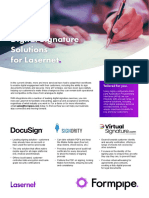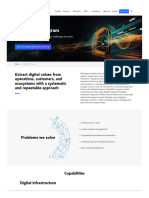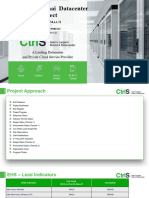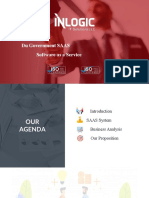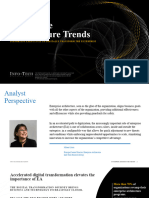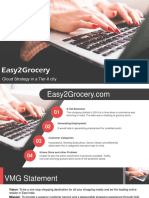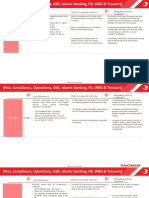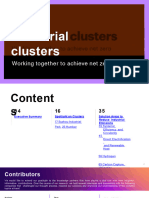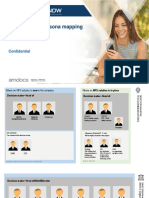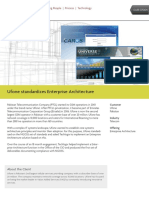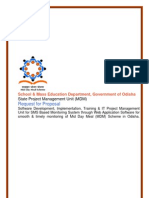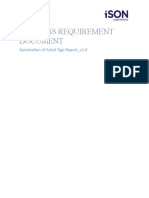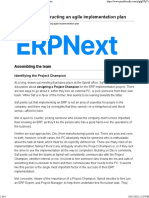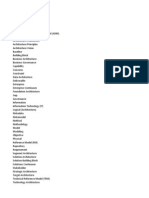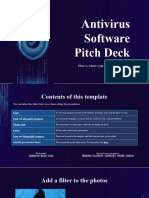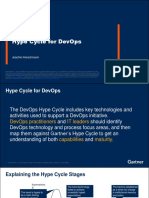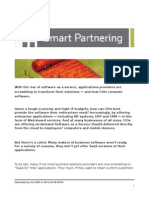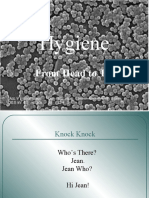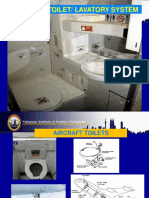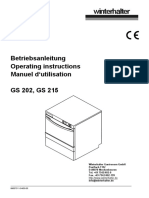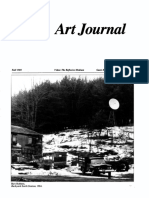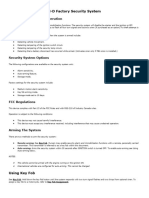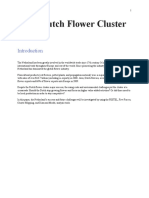FileHold Document Management Software 16.
2 DMS Requirements Key Requirements
Document Management Software (DMS) Requirements Standard Optional Comments
Key System Requirements
The DMS is a highly available, scalable platform on which to support a library containing
millions of files and documents.
All Administrative functionality can be accessed remotely using a web browser over the
internet or through the companies LAN or WAN. SSL and VPN support further secure
remote user and administrator access.
The network operating system under which the DMS runs must be Windows Server 2012 R2
server or higher.
The network operating system under which the DMS runs must be Windows-based.
The DMS provides a web browser, a desktop client, and a mobile browser as standard
features.
The DMS desktop client is fully certified with Windows 7 or higher in a managed
environment.
The DMS web client is supported on popular web browsers, including Mozilla Firefox,
Google Chrome, Microsoft Edge, and Safari.
The mobile client is HTML 5-based and allows users to access documents, add files, and
approve and review workflow tasks using a smartphone or tablet.
The DMS allows for an enterprise licensing model.
The DMS allows for concurrent and named user licensing.
The DMS provides both full user licenses for users to add, edit, and delete documents in the
system, as well as limited user licenses to restrict document access to read-only status.
These limited licenses will also be restricted from processes such as workflow.
The DMS must have a tool that checks server configuration and health settings to ensure
the document repository is running properly and without errors.
The DMS must provide the ability for a user to work offline.
The system administrator can centrally control how the system works for users. A system
administrator can set the default value for the end-users, which they may change, or the
settings can be enforced.
The DMS allows for easily resetting a user password.
The system allows the configuration of multiple balanced storage repositories to allow
scalable growth.
The DMS allows definition of multiple storage repositories for specific areas of the
document library.
The DMS is capable of exporting documents out of a test system and importing them into a
production system.
The DMS is fully integrated with Microsoft Office applications (Word, Excel, PowerPoint,
OneNote, Visio, Outlook).
The DMS allows users to attach documents to outgoing e-mail using Microsoft Outlook.
The DMS allows users to send documents as attachments or links using their email client of
choice.
The DMS will have an optional document portal, where anonymous or named users can
access a web-accessible interface with extremely limited rights.
The DMS provides a wide variety of out-of-the-box reports on system usage.
Document Storage and Retrieval
The DMS has multiple methods to import existing documents from existing third-party
applications, desktops, network drives, and file servers.
The DMS has a configurable server-side document importation feature to retrieve
documents from other systems en masse.
The DMS can store virtually any kind of document in its native file format and ensures it will
not be altered when added to the system.
The DMS offers the option of adding documents as "records", which cannot be altered or
modified by users.
The DMS is capable of importing audio content files (MP3, WAV, etc.) and launching
appropriate media viewers for retrieval.
The DMS is capable of importing video content files (MP4, MOV, AVI, etc.) and launching
appropriate media viewers for retrieval.
The DMS can capture, store, retrieve, and export irregular-sized documents - e.g., larger
than 8 ½ x 11.
The DMS allows users to add emails along with their attachments. Attachments can be
added separately from emails if required.
The DMS can track the location of hardcopy paper documents and physical records. Physical
documents can be located via search.
The DMS can "check-out" both electronic documents and physical records.
The DMS provides check-in/check-out ability, preventing documents from being
overwritten or deleted when updated. The DMS librarian can review the status of all
documents checked out and check a document back in on behalf of another user.
The DMS automatically places all documents under version control.
The DMS will automatically increase the version number of the document upon check-in.
Previous versions of documents are maintained by the system if a rollback is required.
The DMS offers customizable version numbers for document release or legacy version
numbers.
The DMS can classify documents by use-type. These schemas will be customizable to match
organizational needs, the number of which should be practically unlimited.
The DMS can tag documents with metadata relevant to the use-type. The number of
metadata tags should be practically unlimited.
The DMS ensures some or all metadata fields are mandatory and must be completed before
the document is added to the library.
The DMS will allow users to define metadata with indexed information from a controlled
vocabulary.
Page 1
�FileHold Document Management Software 16.2 DMS Requirements Key Requirements
The DMS allows metadata to be configured as text, number, dates, URL, currency,
checkboxes, or from drop-down menus.
The DMS can force users to update a metadata field value upon check-in.
The DMS can process Microsoft Word and PDF electronic forms and automatically extract
metadata values.
The DMS can capture metadata from document text with visual tools.
The DMS offers "matter-centric filing", or the ability to automatically tag documents by
dragging the documents into a folder, as used in legal filings.
The DMS can create and print specialized document and version control numbers on
engineering or R&D documents.
The DMS provides adherence to document and record naming conventions or standards. As
documents are added to the library, they are automatically renamed according to the
naming pattern determined by the Library Administrator.
The DMS allows users to subscribe to be notified of edits, changes, or version updates to
documents or folders they are watching.
When an existing subscribed file is updated or a file is added to a folder, the user receives
email notifications that the change has occurred, who has changed it, and a secure link to
directly access the document.
The DMS can send notifications for documents when specific dates are met.
Retention policies for converting to a record, archiving, and deletion can be set on a
document type and done automatically based on a fixed date, or from a metadata field
value.
The DMS will provide the option of archiving documents that can be accessed as needed.
Document Security
The DMS allows navigational security, with multiple layers of user-definable security, to
limit access at department, user, system, function, and document levels.
The DMS has a role-based, granular security model where access can be given to users from
a level of read-only to system administration.
The DMS includes a role-based security model with the ability to establish exceptions.
Additionally, access can be limited to “read-only” at the user level.
The DMS can send secure links to documents directly to team members, partners, suppliers,
or customers. File security is maintained as only authorized users can retrieve the file by
using the link.
The DMS allows administrators to block users from emailing a document as an attachment
from the DMS.
The DMS records a detailed permanent audit log of all actions performed on a document
including user and time stamp. These logs can be exported as reports as needed.
User roles will be used to determine the individual user's ability to delete documents in the
system.
The DMS will provide a structured environment for documents.
Documents accidentally deleted by users (with delete permissions) can be easily recovered
from a "recycle bin".
Interface
The interface must be easy to use and familiar to users of a Windows environment.
The interface can be used with minimal mouse clicks and menu selection.
The user will be able to trigger actions through contextual menus that can be activated
through on-screen buttons, system menus, or right-click contextual menus.
The interface will provide help buttons to assist users with information relevant to what
they are looking at onscreen.
The system will provide the user interface in English, French, or Spanish.
The DMS provides the ability to personalize user preferences, views, alerts, workflow
notification preferences, and folder colors.
The DMS allows users to combine and aggregate files into their own personal "virtual"
folders. For example, a Project Manager might have a folder for project documentation,
project legal contract documents, invoices, design documentation, and emails from their
customer all in one "virtual" folder, even though documents are stored in various locations
throughout the library. These "virtual folders" can be shared with other users.
The DMS can create bookmarks to documents frequently accessed, such as a "My Favorite"
list.
The DMS has document-to-document linking to allow users to bundle files into logical
groups and integrated viewing capability to display all linked files screen. Users can point-
and-click on the linked file to access to the record set.
Page 2
�FileHold Document Management Software 16.2 DMS Requirements Searching
Document Management Software (DMS) Requirements Standard Optional Comments
Searching
The DMS offers web-based, mobile-based, and desktop clients for document searching.
The DMS search capability can search the metadata associated with the document as well
as the content of the document.
The DMS search capability can be configured to only search document metadata and
exclude document content.
The DMS search capability can index and search the content from several file types with
text layers, including PDF, ZIP, and Microsoft Office products.
The DMS search capability can be restricted to a specific area of the library (e.g. cabinet or
folder).
The full-text search capabilities support fuzzy, synonym, phonic, Boolean, wild card,
phrase, and proximity searches.
The DMS search capability must index document file properties, including the date added
to the system, document owner, size, format, and file type.
The DMS can export search results and import them into an analysis tool, such as
Microsoft Excel.
Users can only search for and find (retrieve) find documents they are authorized to access.
The DMS can save searches for re-use. These searches can be made public for use by
others or private for use by only the user.
Saved Searches allow the user to change one or more search criteria as needed to make
the saved search a search template.
The DMS must be able to search the library from third-party software by use of a shortcut
key.
For text fields, the retrieval software should permit index searches based on exact or
partial matches of specified field values.
For numeric fields, the retrieval software should permit index searches based on ranges of
field values specified by the following relational expressions: equals, does not equal,
greater than, less than, greater than or equal to, less than or equal to, between, at least,
and no older than.
Ability to retrieve documents by document title, classification, type, address, customer
name, number, or any other user-defined index value.
The DMS should allow a user to search for documents using terms from a controlled
vocabulary in the document metadata.
Search results should be displayed in a simple list, with ranking by relevancy. Documents
can be accessed directly in the search interface.
The DMS can highlight search results in the viewer from the document text.
The DMS can recognize PDF and TIFF documents without a text layer and apply an optical
character recognition (OCR) filter to them so that they are fully searchable.
Ability to retrieve documents using multiple index words, numbers, dates, etc.,
simultaneously.
The system should accommodate the inclusion or exclusion of previous document versions
and archived documents from search results.
While using the search, users should be able to perform basic document management
tasks, such as editing metadata, linking to other documents, or checking documents out,
which can be performed in the other areas of the DMS.
The DMS can search directly in the Microsoft SQL database.
The DMS can report on the full-text search engine and send notifications to administrators
if there are any issues.
The DMS can configure the search engine.
The DMS can log all searches conducted in the system.
The DMS has the ability to set the maximum number of search results.
Page 3
�FileHold Document Management Software 16.2 DMS Requirements Workflow
Document Management Software (DMS) Requirements Standard Optional Comments
Workflow
The DMS provides a document review and approval workflow for documents needing to
pass through several authors, reviewers, and approvers before being ready for general
distribution.
Workflow will be customizable to fit the specific document review and approvals processes
required by the organization.
Users can quickly create staging and collaboration areas for documents as they are being
worked on. Once reviewed and approved, documents can be moved or linked to publishing
folders for wider spread distribution.
Workflow tasks can be sent to a single user, a group of users, or one of a group of users.
Workflow tasks should allow users to make comments and attach feedback documents as
required.
Approvers can approve or reject the document. The DMS logs this as "Approved" or "Not
Approved" accordingly.
The DMS must keep a sign-off sheet for each document version so users can see who
approved or rejected the document, and any feedback provided.
The sign-off sheet should be available for export as required.
Workflow tasks should be easily delegated if a participant is unable to complete the task.
Delegation of a task and signing authority can be given to other users for individual tasks, or
for all tasks over a given period.
Individual document versions can be restricted from broader circulation until they have
been approved by appropriate parties.
The workflow allows specific users to act as observers of review or approval workflows.
Observers can track the progress of documents as they proceed through the workflow and
view any comments and feedback as provided.
The status of a workflow (review, approved, not approved, pending approval, not submitted
for approval) can be easily searched.
The date of review or approval of a document can be easily searched.
Users participating in review or approval workflows are provided with a personalized task
list for all tasks assigned to them. Users can see at a glance their tasks, a description of the
work to be done, who assigned the task and it needs to be completed.
Assigned workflow tasks are sent as email notifications.
Workflow allows user to define conditions, or be locked-down to prevent changes.
Workflow must provide support for ad-hoc and rules-based workflows.
Workflow can be automated for a specific document type and workflow template.
Workflow creates an audit trail.
Workflow includes electronic signature capabilities.
The DMS workflow must integrate with Adobe Sign.
Workflow tasks can be viewed in a calendar.
The workflow can automatically start when a document is added.
The workflow can be restarted automatically or manually.
Administrators can clone a workflow template.
The workflow participant may postpone the approval of a document. This could pause the
workflow, send it to a previous task in the process for revision, or create a one-time review
task for another user.
The workflow allows a task to be assigned to a group of users where all participants must
complete the task or only one in the group must complete the task.
Tasks can have specific deadlines assigned to them, either the number of hours and/or days
or a specific date and time.
The workflow should alert users of upcoming deadlines and when tasks are overdue. These
alerts can be repeated at defined intervals.
A document under a workflow process can be checked out and modified by a participant in
the active workflow activity.
Several documents can be included in a single workflow and can be approved in a single
step.
The workflow should have the ability to insert an activity 'on the fly'.
Any changes made to the workflow are recorded in a change log.
The statuses of workflows should be viewable through a dashboard.
The workflow history must be maintained for all document versions.
The DMS must support an external workflow feature to allow documents to be sent to
external users for viewing or approval. These approvals will be part of the audit trail for
documents.
Documents sent to external users to be sent via secure transmission links. These links can
have a required viewing timeline, can be rescinded, and will record the time of document
viewing, download, and review or approval.
The DMS allows administrators to determine which users are permitted to send documents
to external users via transmission.
Documents sent to external users can be viewed and approved using web browsers, and do
not require the recipient to install new software.
Documents sent to external users for approval can require a recipient-defined password for
a digital signature on documents.
External recipients of transmitted documents can be restricted from downloading the
document and be given a "view only" option.
The web-based viewing platform for viewing or approving externally-transmitted
documents must be viewable easily on mobile devices.
Documents that completed workflow can be converted to PDF or preserved so no further
changes can be made to them.
Page 4
�FileHold Document Management Software 16.2 DMS Requirements Workflow
All elements of external transmission must be logged as part of the audit trail; user
initiation, document transmission, successful receipt, and any steps performed must be
logged with the date and time and recalled as part of the unalterable reporting record of
activities.
The workflow can be configured to allow the sign-off sheet, and other information about
the document, to be appended as an attachment.
Document transmission to external sources can be configured as a verified source through
the purchase of an SSL certificate.
Page 5
�FileHold Document Management Software 16.2 DMS Requirements Document Viewer
Document Management Software (DMS) Requirements Standard Optional Comments
Document Viewer Functionality
The viewer allows users to look at certain image, PDF, and Microsoft Word documents files
without having the native software installed.
The viewer provides the ability to print out a document. This can be disabled for read-only
viewers if required.
The viewer can have multiple files open at the same time.
Ability to manipulate image displays by scaling, magnifying, or panning.
The viewer can add, remove, or move pages.
The viewer provides the ability to save a document locally.
The viewer can publish new documents or new versions into the library.
The viewer can automatically show documents in folder and search results.
The viewer can highlight search results.
The viewer can assemble new PDF documents based on existing documents in the library
and append or prepend pages to the new document.
Assembled documents from the viewer can be PDF, PDF/A-1A, or PDF/A-1B format, with
optional password protection for access.
Assembled documents from the viewer can be transmitted to external users upon
completion of the assembly task.
The viewer must be available in both desktop and web versions of the client.
The viewer allows a user to do markup annotations on documents without having to open
them in native software. The annotated documents can be saved as a new version as a
separate markup layer, or as a new version with the markups permanently marked onto the
document.
The viewer allows users to apply image-based markups to documents, including stamps,
sticky notes, shapes, text, and highlights.
The DMS allows users to create custom markup stamps that can included metadata values.
The viewer allows watermarks to be applied to a printed document.
Page 6
�FileHold Document Management Software 16.2 DMS Requirements Integration & Customization
Document Management Software (DMS) Requirements Standard Optional Comments
Integration and Customization
The DMS integrates with Microsoft SharePoint to give users access to documents in both
locations.
The DMS synchronizes users or groups from objects in Active Directory, LDAP, or NT
Domain directory servers. Once integrated, both users and groups can then be assigned to
functional roles.
The DMS should have an industry-standard, fully-documented API that allows integration
with third-party applications.
The DMS integrates with Microsoft SQL Reporting Services to generate an infinite array of
reports.
The DMS interfaces a virtual printer to allow the adding of documents from any Windows-
based application with the print function.
The DMS allows for the expansion of document repositories while remaining seamless to
the user.
The DMS can be "localized".
The DMS can be rebranded.
The DMS can be customized so that appearance resembles that of an organization's unique
look and feel.
The DMS has a "portal" in which casual users can access specially designated information in
the library without the need to log-in. These users would be restricted to "read-only"
access.
The DMS can take documents and file them into appropriate folders based on predefined
values in customized scripts.
The DMS can integrate with multiple data providers such as ODBC, OLE DB, Oracle, and SQL
Server to single-source metadata.
The system has schema level database lookups that allows a query to be executed on an
external database to retrieve additional values that are mapped to the other metadata
fields in the schema.
The DMS has an importing tool that can perform server-side lookup of metadata or perform
a lookup of metadata from another database.
The DMS allows the export of metadata and version property information to other
software.
The DMS is fully integrated with installed Microsoft Office applications (Word, Excel,
PowerPoint, OneNote, Visio, Outlook).
The system can bring emails into the library automatically from Microsoft Outlook.
The DMS can execute searches of the library while in third-party Windows applications
through keystroke combinations.
The DMS must support two-factor authentication.
The DMS workflow must integrate with Adobe Sign.
The DMS must be FIPS-140 (US Federal Information Processing Standards) compliant.
Page 7
�FileHold Document Management Software 16.2 DMS Requirements Document Scanning
Document Management Software (DMS) Requirements Standard Optional Comments
Document Scanning
The DMS provides either a built-in scanning tool or third-party scanning software that
seamlessly integrates with the DMS.
The DMS supports both simple and complex scanning.
The DMS is configurable to watch for files created by the scanning process and streamline
the indexing and addition of scanned files to the library.
The DMS is compatible with desktop and production scanners.
The DMS provides the ability to import images and indexes provided by third-party scanning
software.
Scanned documents with a searchable text layer are indexed and searchable.
The DMS interfaces with a network facsimile system.
The DMS can recognize PDF and TIFF documents without a text layer and apply an optical
character recognition (OCR) filter to them so that they are fully searchable.
The DMS can do web-based scanning.
The web-based scanning software can zoom, rotate, de-skew, and move through document
pages.
The web-based scanning software can upload documents to the library.
Documents scanned with third-party scanning software must have the ability to import
documents into DMS along with any values that were zonally OCR'd to populate metadata
field values.
Supplied third-party scanning software must have the ability to automate the capture of
data from documents.
Supplied third-party scanning software must have the ability to manipulate document page
layout, split documents, move pages, and perform image cleanup.
Page 8

